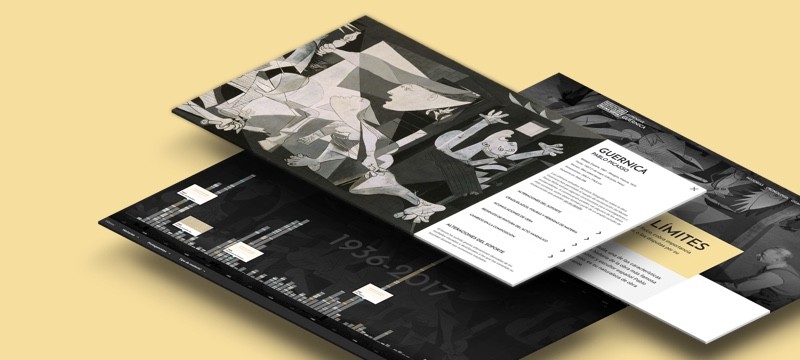Since then, the expression and immediate recognition of the painting as a global symbol have sufficed for its image – not solely its physical presence – to activate its artistic, and on countless occasions political, potential, verified by its reproductions in demonstrations and civil protests.
The appropriations that have yielded versions of Guernica have been wholly replicated as a political symbol in numerous episodes of violence and social injustice, particularly through murals, posters and placards.
The image of the painting has managed to transmit pacifist and anti-war messages, turning it into an icon and granting it its own space on the street.

The replicas of the painting, however, are not restricted to anonymous, impulsive or popular use. Since the 1940s museums have opted, on numerous occasions, to employ reproductions when the loan of the painting was not possible or unfeasible; thus ensuring its integration in exhibition discourses never falls by the wayside. After Picasso: Epochs in His Art (1941–1942), other MoMA-organised exhibitions which toured the United States included a photographic replica of the work, for instance Studies for Guernica and A Half-Century of Picasso, which travelled between multitudinous venues between 1952 and 1956, and brought its pedagogical role to the fore without the original, its circulation discouraging its inclusion.
Years later, in the summer of 1975, in a highly contrastive context — a divided Berlin and at the height of the Cold War — a reproduction of the painting was on display at the exhibition Kunst und Politik am Beispiel Guernica. Picasso und der Spanische Bürgerkrieg, organised by the neue Gesellschaft für bildende Kunst (nGbK), a left-wing association which explored the differences between art and politics through the case of Picasso and the Spanish Civil War. This modest exhibition still placed at its centre the painting, which, through its medium and message, still transcended its auratic nature and materiality.
Furthermore, in 1955 Jacqueline de la Baume Dürrbach’s workshop, in Aubusson (France), received a commission from Nelson A. Rockefeller to produce a replica tapestry of Guernica, possibly its most renowned reproduction. The tapestry, delivered the following year and authorised by Picasso, reached New York shrouded in controversy, for Alfred H. Barr Jr. didn’t recognise its colours and was fearful of criticism over the painting’s conservation.
The workshop made a total of three tapestries, which have transcended their replica status to become pieces of art and history in their own right and have thereby taken on a life of their own.
For the exhibition Picasso: Guernica, which toured around different cities in Japan in 1962, and faced with the unfeasibility of taking the original work, Rockefeller loaned his tapestry to the organisers, who, through the painting, appealed to the empathy of Japanese people over the suffering endured after the USA’s still-recent atomic bomb attacks on Hiroshima and Nagasaki. Once more, the image of Guernica amply recalled the violence of war. Donated by Nelson A. Rockefeller, one of the tapestries currently hangs in the entrance to the UN in New York; one can be found in the Musée Unterlinden, Colmar (France), and was woven in 1976; and the other hangs in the Museum of Modern Art, Gunma (Japan), and was produced in 1985.















